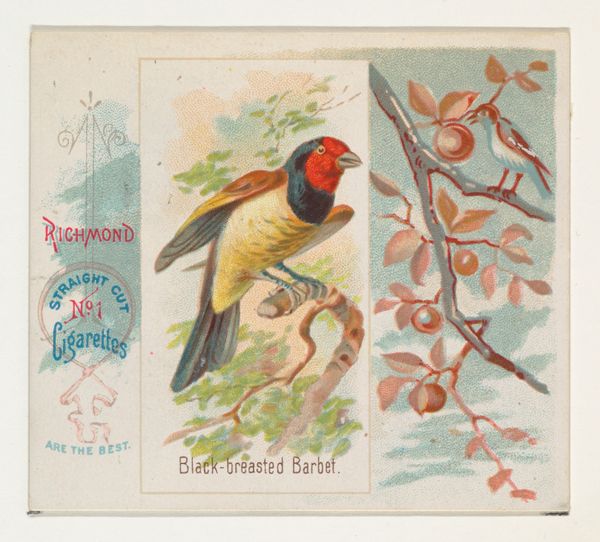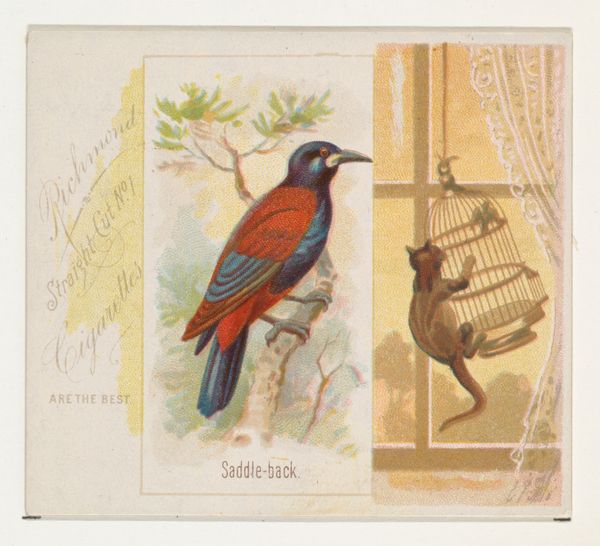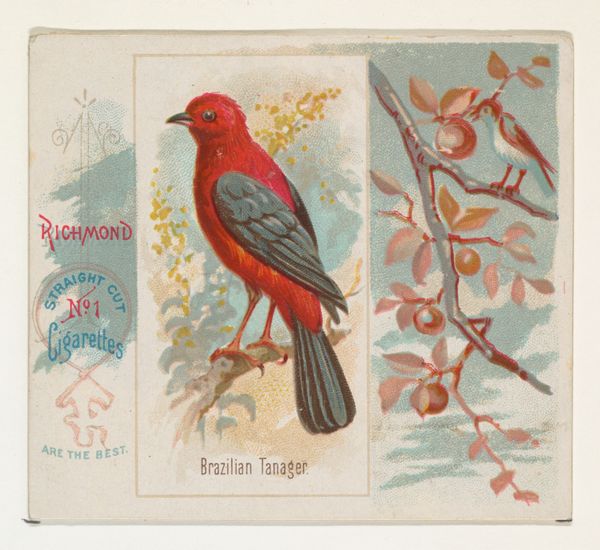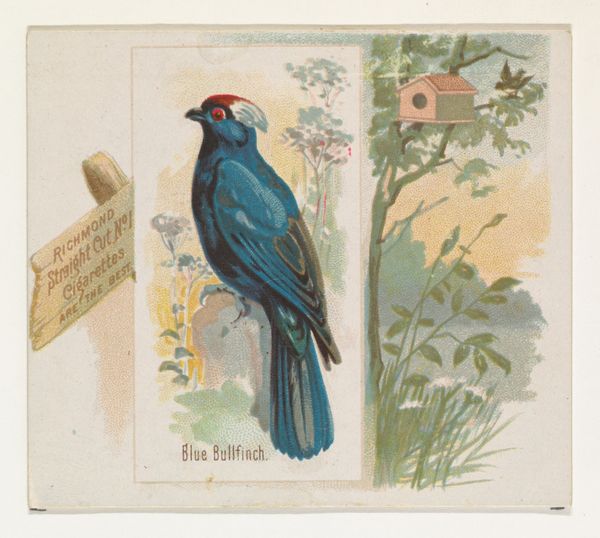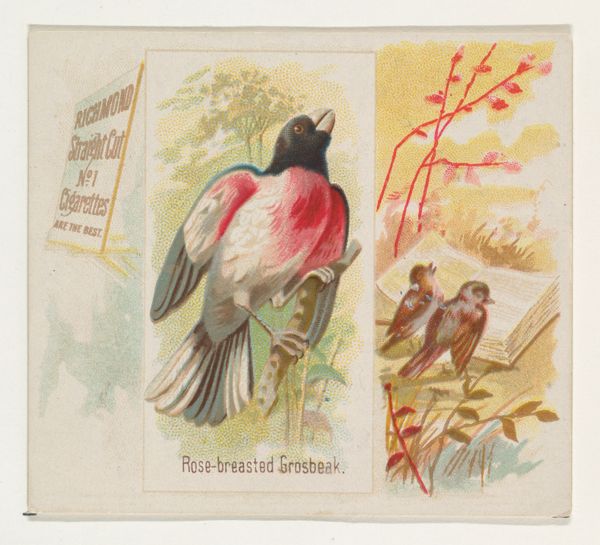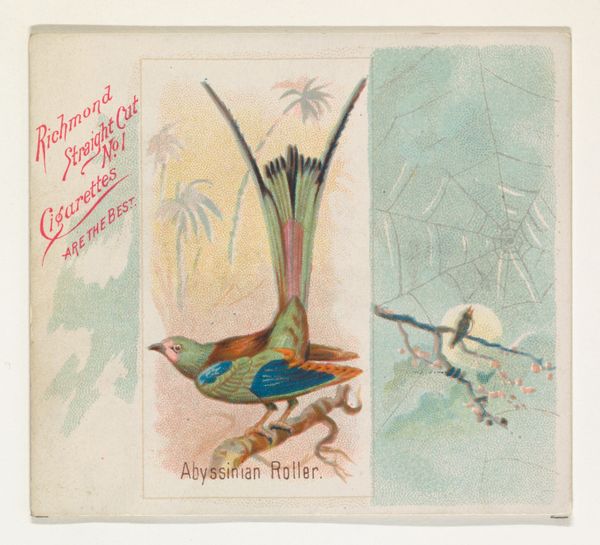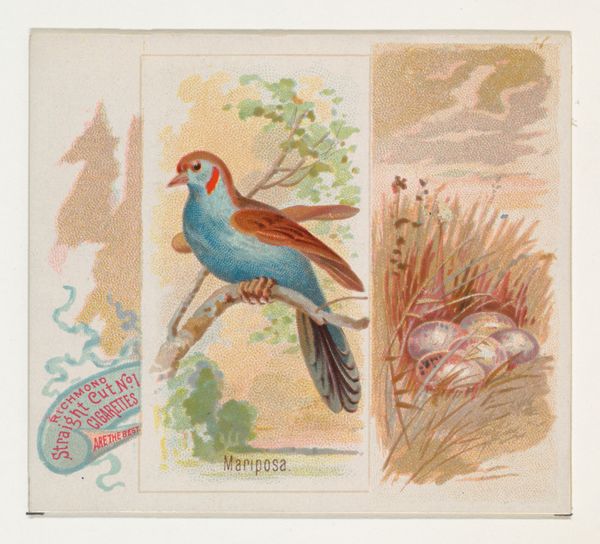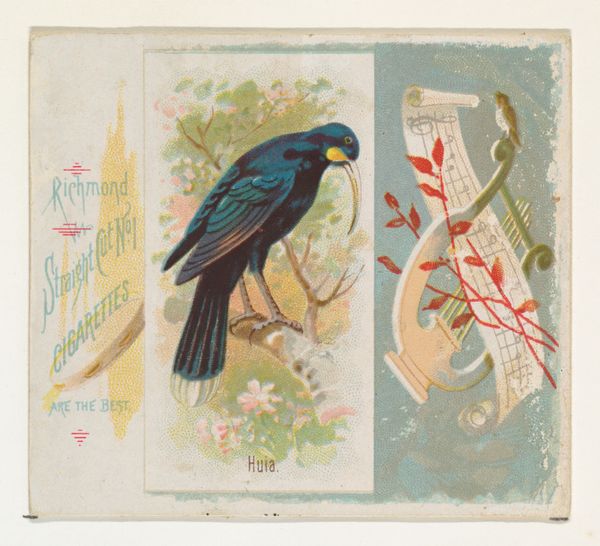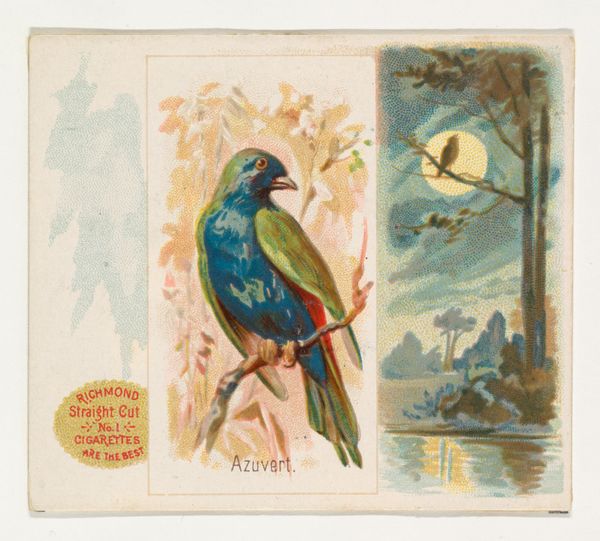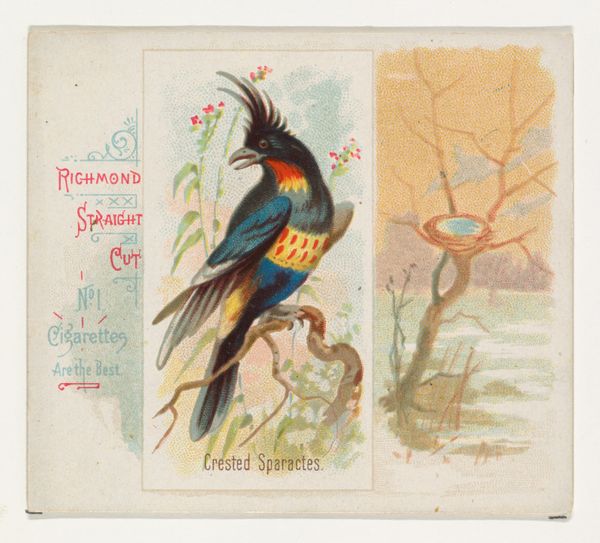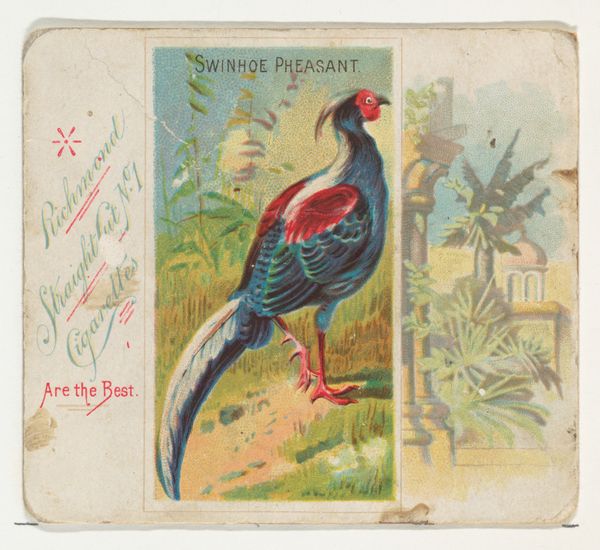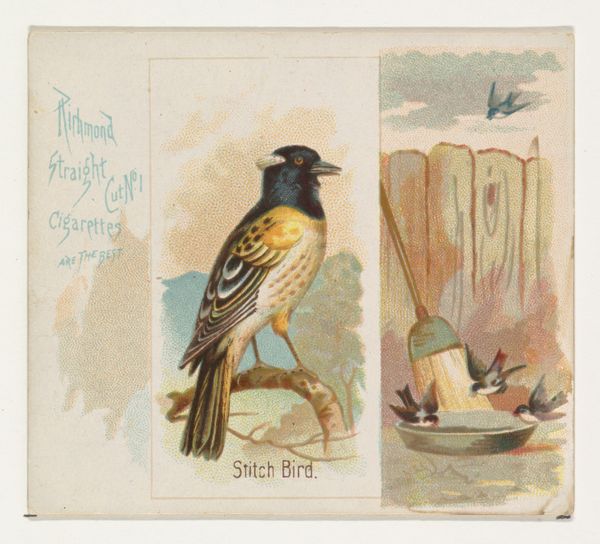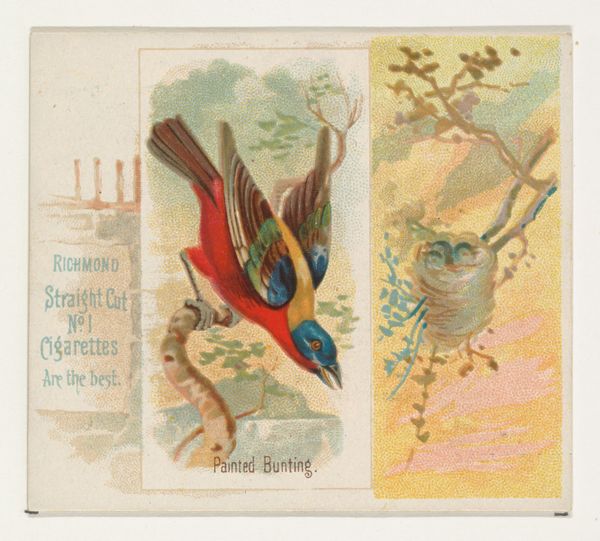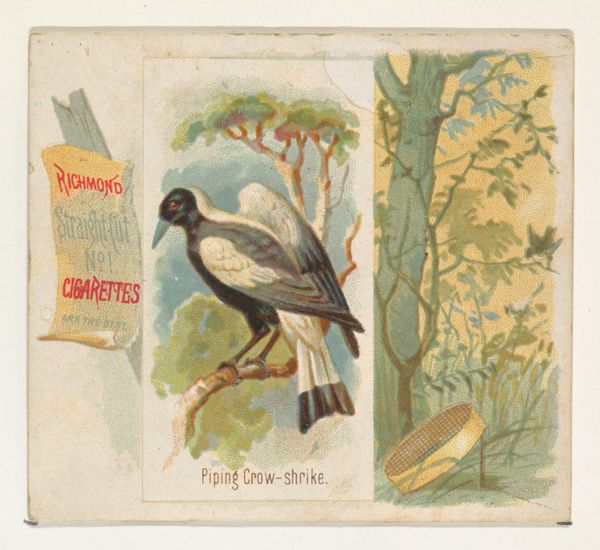
Swallow Dicaeum, from the Song Birds of the World series (N42) for Allen & Ginter Cigarettes 1890
0:00
0:00
Dimensions: Sheet: 2 7/8 x 3 1/4 in. (7.3 x 8.3 cm)
Copyright: Public Domain
Curator: Here we have "Swallow Dicaeum," a print from 1890 that was part of the "Song Birds of the World" series, created for Allen & Ginter Cigarettes. Editor: It's deceptively charming! The colors are quite vivid and jewel-toned. Though small, there's something striking about the bird's pose, its almost cartoonish detail... especially set against that delicate web in the corner. Curator: Allen & Ginter, always attuned to the currents of their time, embraced exoticism in their advertising. These cards, mass-produced as collectibles inserted into cigarette packs, reflect the late 19th-century fascination with ornithology and global exploration—the very branding of commodities contributing to those global systems. Editor: And speaking of commodities, think about the production of these cards themselves. We're looking at colored pencil and print – relatively cheap materials to produce these en masse – for the consumption of another cheap, addictive product. What kind of labor went into these? Were these artists specially trained or anonymous employees working to satisfy a consumer trend? Curator: Those are fascinating questions. The use of natural history imagery, though aesthetically pleasing, obscures the often-exploitative labor practices both within the tobacco industry and in the global trade networks that fueled it. These images also helped construct and reinforce popular notions about other cultures. Editor: Right, and I wonder how this style – let's call it a kind of accessible, almost mass-produced impressionism – influenced taste? Were they trying to cultivate an appreciation for ‘art’ amongst everyday smokers? What were the avenues through which the working classes came into contact with "Art", in the capitalized sense? Curator: That's insightful. It certainly complicates our understanding of high and low culture at the time, blurring the lines between art, advertising, and popular entertainment. It also speaks to the cultural role of corporations in shaping public perception and taste through targeted campaigns. Editor: Looking closer, this small image says a lot about industrialization and visual culture. That cheap paper embodies much about mass-consumption in America. Curator: Absolutely, a humble reminder that even the smallest objects can reflect the larger structures of society and commerce.
Comments
No comments
Be the first to comment and join the conversation on the ultimate creative platform.
